Text
Guys, check out my fake book cover!

My last drawing in 2023 was a fake book cover for an original fantasy story I'm trying to write.
#writeblr#writers on tumblr#adhd writer#writerscommunity#writing#wip#oc#original character#fantasy#dark fantasy#original art#troyanda#george briar
8 notes
·
View notes
Text
Hi!
My pen name is George Briar, I'm an aspiring author with a degree in literature and screenwriting; officially diagnosed with ADHD. Writing in various genres.
Here, I'm sharing my stories and tips on writing as I continue practising my craft and making steps towards finishing my first full-fledged book draft. Be welcome!

1 note
·
View note
Text
Here's my ultimate character profile template that helps define crucial details of any important character in your story, may additionally help with outline, plot holes, and even writer's block if you're stuck or losing interest:
Name:
Gender:
Personality type: (unnecessary, but may be helpful with making your cast diverse and assigning more realistic fears and desires, e.g., enneagram)
Desires: (what does your character want?)
Fears: (what keeps them from getting it?)
Beliefs and misbeliefs: (what does your character need to change their mind about in order to overcome their fear and get what they desire? There's also beliefs in this part, because some things your character believes in don't necessarily change, but if they can somehow affect the plot, why not mention it? It doesn't necessarily have to be bad)
Social life: (how does your character behave around their family? Their friends? Strangers? Rivals? Enemies?)
Addiction: (what habits does your character possess? What or who do they depend on? Do they always need something in their hands to fidget with? Or do they often ask for a light?)
Self image: (how does your character view themselves personally? What are their imperfections they feel bad about? What are the parts of their appearance they're proud of? Do not confuse with physical description!)
Physical decription: (do not confuse with the former! What does your character look like to others?)
Backstory: (here's your time to shine by using everything we established in previous parts by explaining the reason behind each (but not necessarily every single one) part. For example: where did your character's fears come from? Their desire? Their misbeliefs? The ugly scar they're so uneasy about? Why do they smoke or need fidget toys? Why are they more friendly to strangers than their own family? Etc.)
Here's the blank version to copy and paste into your projects. Feel free to use, change, ignore some parts, or add your own:
Name:
Gender:
Personality type:
Desires:
Fears:
Beliefs and misbeliefs:
Social life:
Addiction:
Self image:
Physical description:
Backstory:
#writing tips#writing resources#writers on tumblr#adhd writer#writing group#writing community#writing#writeblr#ao3 writer#writers and poets#writerscommunity#character design#character writing#writing template#writing techniques#writing tip#character template#character profile#writing help#writer's block
185 notes
·
View notes
Text
Thought up a structure for scenes/chapters that I really like. It helps me a lot.
Mystery: (initial main question that was hinted at in the previous chapter or in the first paragraph of this one; a promise; a major story beat that has to be answered partly or fully by the end of the chapter; it has to be an obvious question(s) that you inspire in reader's minds)
Revelation: (the answer, that might reveal partly or fully the answer to the initial main question of the current chapter/scene)
New mystery: (the revelation should inspire another question, like a plot twist/revelation the reader has to know more about; said question has to be answered fully or partly in the next chapter/scene)
Side note: if needed, for a short story each part can be divided into paragraphs or scenes; if it's for a chapter each part can be divided into scenes.
Rinse and repeat until you have a whole story/novella/novel.
#writing tips#writers on tumblr#adhd writer#writing community#writeblr#writing#writing tip#story structure#writing advice
29 notes
·
View notes
Text
Things I Do To Make Writing Easier as Someone with ADHD
Talking with my therapist the other day, I realized most of my productivity "hacks" fall into 2 categories: changing things that were made by/set up for people without ADHD OR finding ways to "trick" my brain into doing what I want.

MODIFYING THINGS TO FIT THE WAY MY BRAIN THINKS AND WORKS
change the setup and format of documents
something about the standard-size paper with the standard-size margins and standard boring font reminds me too much of school work. it's boring and familiar in a way that doesn't stimulate my brain the way it needs to in order to be fully creative.
Everyone will want theirs to look differently but here are the two ways I usually modify my document setup:
The "formatted paperback book" way that I outlined in THIS POST (Statement size paper, .5" margins, fonts like Georgia or EB Garamond)
And the one I don't have a name for but it's so nice to look at: US Letter size, .5" margins on all 4 sides, and the Karla font on Google Docs*. I also use this method with outlining. The tutorial is HERE!
use spreadsheets to organize character variables for brainstorming
this may sounds bonkers but it has done WONDERS for me when brainstorming new story characters. my thoughts are too scattered and i normally can't hold onto brainstormed ideas very well.
i made a spreadsheet of character elements and categories and basically use it as a random generator sometimes.
HERE is the post explaining how I use it.
layer the sounds
i work while listening to something. i think most of us do. i have found that the best way to keep my brain focused is to play music and then open a YouTube tab on lower volume of white noise ambiance like wind, rain, or rainforest sounds. That provides a constant so the changing music doesn't feel so uneven and distracting.
along with this, i usually find an instrumental, themed playlist on YouTube. French countryside, jazz lounge, 1950s picnic. You can find just about anything.
if i really want my music (with lyrics), i pick one song per scene and loop it. the consistency not only takes away distractions, but also makes the scene i'm writing more consistent in tone. most of all, it helps me stay engaged and in the moment.

HOW I (POSITIVELY) TRICK MY BRAIN INTO DOING WHAT I WANT
Reward Systems (that actually work for me)
Normal reward systems for productivity don't work for me. I get frustrated or impatient or let the reward sidetrack me for SO long. Here are some rewards/breaks that work for me.
if i want to use my phone for social media, tiktok, or other scrolling things, I set my timer for 5 minutes. it can take a lot of discipline to actually stop at that timer but sometimes an annoying alarm sound can help or hitting the on/off button (on iPhones) will turn off the alarm AND your phone at the same time.
if my reward is getting a snack, i get it beforehand and put it somewhere in my workspace. otherwise, i will go to the kitchen and get sidetracked for 30 minutes. this goes for most things-- try to get everything you may need or want in your space beforehand. maybe have a written list of usual items.
for a longer break, i do something related to my writing that still gives me a break from the productivity monster. making a playlist for it or finding new music for one, watching (a previously set number of) YouTube videos about the subject or writing craft, drawing a character, creating a fake book cover or poster for it, etc.
separate your "floater" thoughts from the task at hand
i often get thoughts about things to do for the project in the future or ideas for later in the story/outline/scene/etc. But for some reason, adding it to a separate document or in my phone's notes can completely throw off my rhythm and derail my focus. but i HAVE to get it down or i will forget and/or worry so much about trying to remember than i'm not actually focusing on anything.
the only solution i've found for this is physically writing the thoughts or ideas down on paper. something about it being a separate action from typing and a thing i can do so quickly without changing my computer screen makes it easier for me to get it down and keep going. i have a pile of scratch paper and a pen right next to me at all times.
find a way to organize the material you reference while writing that is intuitive and easy for you
i can't have my outline, visual reference/inspiration, AND my draft document in different tabs or windows. i'm not switching through them without being sidetracked or frustrated by how complicated it can get.
the most basic, quick, and free way to fix this is a split screen. Apple laptops and iPads will help you do a full-screen split between two windows. even with the sites i mention below, i always do this.
organizing an outline to reference on a linear document doesn't always work with my brain. i've been trying milanote recently. it lets me create separate pages and organize things like a board with notes, timelines, and photos. the free version may only fit one project depending on how much you have but for my projects (no world-building references needed), the free version is enough.
making a physical copy of it, either on a board or in a binder also works for me. i'm not blindly scrolling trying to find something, it's much more about holding it and muscle memory.
i believe Scrivener also can be used as a board system. it's a one-time purchase and currently there is a discount code if you search "Camp NaNoWriMo offers". They do this every April and November with their events.

I hope this is helpful or at least a good launch point for anyone (ADHD or not) who needs it! I might make a second one if I think of more.
[ADHD is not a one-size-fits-all thing. This is simply what I do as someone with diagnosed but unmedicated ADHD]
As always, take what you want and leave the rest. happy writing!
[call it good] writing
1K notes
·
View notes
Text
Unleash Your Inner Witch: Tips for Writing Witchcraft

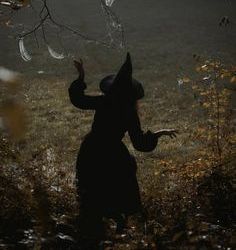
Introduction
Witchcraft has been a fascinating and mysterious topic for centuries. From the Salem witch trials to modern-day Wicca, the practice of witchcraft has evolved and endured. Whether you are a seasoned practitioner or a curious beginner, writing about witchcraft can be a powerful and transformative experience. In this blog post, I’ll help you explore tips and strategies for writing about witchcraft, including researching the history of witchcraft, developing your own unique system, selecting tools, creating spells and rituals, incorporating mythology and folklore, and writing with intention and purpose.
Explore the History of Witchcraft
Before you can write about witchcraft, it's important to understand its history and evolution. Witchcraft has been practiced in various forms throughout history, from ancient pagan traditions to medieval and common era witch-hunts. A thorough exploration of the history of witchcraft can provide context and inspiration for your writing.
One way to explore the history of witchcraft is to read books and articles on the subject. Look for works by reputable historians and scholars, such as Ronald Hutton's "The Witch: A History of Fear from Ancient Times to the Present." You can also visit museums and historical sites related to witchcraft, such as the Salem Witch Museum in Massachusetts or the Museum of Witchcraft and Magic in Cornwall, England. Google is another way to research, but the articles you find on the internet aren’t always true; it’s best to use search engines other than Google to find more truthful information.
Finally, consider connecting with other practitioners of witchcraft and participating in online communities and forums. These communities can provide valuable insights and perspectives on the history and practice of witchcraft.
Research Modern-Day Witchcraft
While the history of witchcraft is important, it's also essential to understand modern-day witchcraft. There are many different traditions and practices within the broad umbrella of witchcraft, from Wicca to Hoodoo to modern eclectic witchcraft. Researching modern-day witchcraft can help you develop your own unique system and style of writing about witchcraft. Start by exploring different books and websites on modern-day witchcraft. Look for authors and practitioners who resonate with you and your writing style. Consider attending local events and workshops related to witchcraft, such as pagan festivals or Wiccan covens. These experiences can provide valuable insights and inspiration for your writing. You don’t have to go to physical events or workshops in order to learn about witchcraft, but if you want a realistic experience and authentic knowledge on witchcraft it’s best to do so.
Remember that witchcraft is a constantly evolving and changing practice. Stay open-minded and willing to learn as you research modern-day witchcraft.
Develop Your Unique Witchcraft System
Once you have a solid understanding of the history and modern-day practices of witchcraft, it's time to develop your own unique system. This can include selecting tools and materials, creating spells and rituals, and incorporating your own personal mythology and folklore.
When selecting tools and materials, consider what resonates with you and your writing. This can include herbs, crystals, candles, and tarot cards, among others. Experiment with different tools and materials to find what works best for you.
Creating spells and rituals can be a powerful and transformative experience. Consider what intentions and desires you want to manifest through your writing, and craft spells and rituals accordingly. Remember to stay true to your own personal beliefs and values.
Finally, consider incorporating your own personal mythology and folklore into your writing. This can include family stories and traditions, personal experiences, and cultural mythology. By incorporating your own unique perspective and voice, you can create powerful and authentic writing about witchcraft.
Choose Your Witchcraft Tools
Once you have developed your unique witchcraft system, it's time to choose your tools. This can include physical tools, such as candles and crystals.
When selecting physical tools, consider what resonates with you and your writing, including whatever fits the plot of your story. This can include materials that have personal significance or symbolism, as well as tools that are practical and useful for your writing process.
Find Your Writing Software
When selecting digital tools, consider what will help you stay organized and productive. This can include writing software, such as Scrivener or Google Docs, as well as online communities and forums for feedback and support.
Remember that your tools should support your writing process and help you achieve your goals as a writer of witchcraft.
Create Spells and Rituals
Creating spells and rituals is an essential part of writing about witchcraft. These practices can help you manifest your intentions and desires, as well as connect with your own personal mythology and folklore.
When creating spells and rituals, consider what you want to achieve through your writing. This can include personal growth, healing, or manifestation of specific desires. Craft spells and rituals that are aligned with your own beliefs and values.
Remember to approach spells and rituals with intention and respect. These practices can be powerful and transformative, and should be treated accordingly.
Consider noting what spells would fit in your story, for example if you’re character wants someone to fall in love with them consider creating a love spell, make sure to have a note-taking digital software or app to help you note down everything about the spells and rituals you create. Including the incantation, the items your character needs to cast it. And anything else that has a relation with your spell(s).
Incorporate Mythology and Folklore Mythology and folklore are an important part of the history and practice of witchcraft. Incorporating these elements into your story can add depth and richness to your work.
When incorporating mythology and folklore, consider what resonates with you and your story. This can include cultural mythology, family traditions, and personal experiences. Use these elements to add authenticity and depth to your writing.
Remember to approach mythology and folklore with respect and sensitivity. These are living traditions that should be treated with care and reverence.
Write with Intention and Purpose When writing about witchcraft, it's important to approach your work with intention and purpose. This can include setting goals and intentions for your writing, as well as staying true to your own beliefs and values.
Consider what you want to achieve through your writing. This can include personal growth, healing, or sharing your experiences with others. Craft your writing with these goals in mind. Remember to stay true to your own voice and perspective. Witchcraft is a deeply personal and individual practice, and your writing should reflect this.
Practice, Revise, and Share Your Work
Like any form of writing, writing about witchcraft requires practice, revision, and sharing your work with others.
Take the time to continually research about witchcraft and the traditions, and incorporate your research into your revision process. Revise your work with intention and purpose, and seek feedback from others to help improve your writing. Don’t be afraid to get a real practitioner of witchcraft to become a beta-reader for your story. They can help you find anything offensive or misleading about witchcraft in your novel.
Finally, share your work with others. This can include submitting your writing to publications or sharing it with online communities and forums. By sharing your work, you can connect with others and inspire them to explore their own inner witch.
Conclusion
Writing about witchcraft can be a powerful and transformative experience. By exploring the history of witchcraft, researching modern-day practices, developing your own unique system, selecting tools, creating spells and rituals, incorporating mythology and folklore, writing with intention and purpose, and practicing, revising, and sharing your work, (try saying that five times.)
You can unleash your inner witch and create powerful and authentic writing about witchcraft. Remember to stay true to your own voice and perspective, and approach your writing with respect and intention.
(Note:) It’s important to note that witchcraft is a craft/practice not a religion. All Wiccans are witches and pagans, but not all individuals who practice witchcraft are wiccans or pagans.
TheWriteAdviceForWriters 2023
335 notes
·
View notes
Text
From Ink to Screen: Unveiling the Magic of Penning Your Novel on Paper Before Typing
Embracing the Art of Handwriting in the Digital Age
Dear fellow writers and scribes, in this modern era dominated by digital screens and keyboards, there exists a timeless art that holds an invaluable place in the world of storytelling—the act of writing a novel manuscript by hand. In this exploration, we uncover the profound benefits and enchantment of embracing the age-old practice of putting pen to paper before transcribing our narratives onto the digital canvas.
Cultivating a Deeper Connection with Your Story
Harnessing the Power of Pen and Paper
Writing by hand establishes an intimate connection between author and narrative. The tactile sensation of the pen gliding across the paper sparks a different form of creativity, fostering a deeper engagement with the story.
Unleashing Uninhibited Creativity
The absence of the backspace key frees the mind from self-editing, allowing the writer to explore uncharted territories without the pressure of perfection. Handwriting encourages a raw and unfiltered flow of ideas.
Enhancing Cognitive Processes and Memory Retention
The Brain-Hand Coordination
Physically writing engages various motor skills and cognitive processes, stimulating the brain in ways that typing does not. This process aids in information retention and deepens understanding of the narrative.
Solidifying Memory and Imagination
Studies suggest that handwriting improves memory retention. By crafting the story by hand, authors reinforce their connections to characters, plots, and settings, fostering a more vivid and immersive world within their minds.
Embracing the Artistry of Writing
Emotion and Authenticity in Penmanship
The nuances of handwriting, the pace, the pressure, the emotion behind each stroke of the pen, infuse the manuscript with a unique essence. Handwriting embodies a sense of authenticity that's often felt in the storytelling.
Overcoming Writer's Block
The physical act of writing can help break through creative blocks. The freedom to doodle, draw mind maps, or jot down thoughts alongside the text encourages a free flow of ideas.
Transitioning from Page to Screen
Transcribing to Digital: A Stage of Refinement
After the manuscript is written on paper, typing it onto a computer becomes a stage of refinement. This transition allows for editing, revising, and refining the narrative with a fresh perspective.
Utilizing the Best of Both Worlds
The digital medium offers the advantage of efficient editing, formatting, and ease of sharing. Combining the organic creativity of handwriting with the digital tools refines the manuscript to its best form.
Blending Tradition with Technology
The convergence of handwritten creation and digital refinement unveils a harmonious blend, allowing writers to harness the depth of their creativity while benefiting from the efficiency and modern tools provided by technology. Embrace the art of writing on paper before typing, and discover the enriched depth and authenticity it adds to your storytelling.
As you embark on your writing journey, consider weaving the magic of pen and paper into your creative process, embracing the unique connection and creativity it unlocks. Explore this balance and discover the beauty of both worlds in your literary endeavors.
Happy writing!
42 notes
·
View notes
Text
Character Development in Different Genres: Tailoring Personalities to Fit Your Story's Needs | Part I of Character Development Series

When it comes to writing, one of the most exciting and challenging aspects is creating compelling characters. Whether you're penning a thrilling mystery, a heartwarming romance, a gripping fantasy, or a thought-provoking literary novel, the characters you bring to life play a pivotal role in captivating your readers. However, not all characters are created equal, and tailoring their personalities to fit the specific requirements of your chosen genre is essential for a successful and engaging story.
So, how can you ensure that your characters shine in the context of their genre? Let's embark on an insightful journey into the art of character development across different literary landscapes.
The Foundation of Genre-Specific Characters
Before delving into the intricacies of character development, it's crucial to understand that each genre comes with its own set of expectations and conventions. While a hard-boiled detective might thrive in a gritty crime thriller, they might feel out of place in a whimsical fantasy world. Therefore, the first step in crafting genre-specific characters is immersing yourself in the nuances and tone of the genre itself.
For instance, in a fast-paced action-adventure novel, the protagonist is often characterized by their resourcefulness, courage, and determination in the face of danger. On the other hand, a character in a cozy mystery may possess a keen eye for detail, a sharp wit, and a knack for uncovering secrets amidst the charm of a small town. By understanding the core elements of the genre, you can lay a sturdy foundation for building characters that resonate with the expectations of your readers.
Investigating Character Traits Across Genres
Let's take a closer look at how character traits can be tailored to suit different genres:
1. Adventure/Thriller:
Courage and Resilience: Characters in this genre often face high-stakes challenges and adrenaline-pumping situations. Their ability to confront danger with courage and resilience is a defining trait.
Quick Thinking: Whether escaping a treacherous trap or outsmarting a cunning adversary, characters in adventure and thriller novels are often marked by their ability to think on their feet.
2. Romance:
Emotional Depth: Characters in romance novels thrive on emotional connections. Their vulnerabilities, hopes, and desires form the cornerstone of their personality.
Charm and Passion: A touch of charisma and passion can elevate romantic protagonists, making them irresistible to both their love interests and readers.
3. Fantasy:
Imagination and Wonder: In the realms of fantasy, characters embody boundless imagination and a sense of wonder. Their belief in the extraordinary and the magical defines their essence.
Epic Journeys and Destinies: From chosen heroes to enigmatic wanderers, characters in fantasy often carry the weight of epic destinies and monumental quests.
4. Mystery:
Curiosity and Intellect: Mystery protagonists are marked by their insatiable curiosity and sharp intellect. Their inquisitive nature drives them to uncover the truth hidden within the enigmatic plots of their stories.
Intrigue and Suspicion: Characters in mystery novels often harbor secrets of their own, adding layers of intrigue and suspicion to their personas.
Crafting Characters with Genre-Specific Flair
Now that we've glimpsed into the distinctive traits that define characters across genres, it's time to infuse our characters with that genre-specific flair. Here are some creative strategies to tailor your characters to fit the unique demands of different genres:
1. Know Your Readers:
Before sculpting your characters, get to know your intended audience. Understanding their expectations and preferences within a particular genre can guide your character development process.
2. Subverting Tropes:
While adhering to genre conventions is important, don't shy away from subverting tropes to inject fresh and unexpected elements into your characters. This can breathe new life into well-trodden genres.
3. Embracing Authenticity:
No matter the genre, authentic and relatable characters are the cornerstone of captivating storytelling. Infuse your characters with genuine emotions and experiences that resonate with your readers.
4. Reflecting the Setting:
Characters are not isolated entities; they are shaped by the worlds they inhabit. Reflect the essence of the genre's setting in your characters' mannerisms, speech, and worldview.
5. Dynamic Character Arcs:
Consider how your characters' arcs can align with the thematic essence of the genre. From personal growth in literary fiction to valiant heroism in fantasy, tailor their journeys to harmonize with the genre's spirit.
The Power of Balancing Familiarity and Innovation
While it's essential to cater to the expectations of your chosen genre, it's equally vital to infuse your characters with a spark of innovation. Readers are drawn to characters who feel both familiar and refreshingly unique. By blending genre-specific traits with innovative twists, you can create characters that stand out while remaining rooted in the essence of their genre.
Unleashing Genre-Defying Characters
In the ever-expanding universe of literature, the art of character development is a dynamic and thrilling endeavor. As you embark on the journey of crafting characters for different genres, remember to immerse yourself in the heart of each genre, cultivate characters with depth and resonance, and balance convention with innovation.
Ultimately, the characters you create have the potential to transcend genres, captivating readers across a diverse spectrum of storytelling. So, unleash your imagination, breathe life into your characters, and watch as they navigate the rich tapestries of diverse genres, leaving an indelible mark on the literary landscape.
So, fellow writers, as you embark on your next literary odyssey, may your characters be as diverse as the genres they inhabit, and may their stories resonate with readers far and wide.

Happy writing!
Warm regards, Ren T.
172 notes
·
View notes
Text
Mastering the Art of Plotting a Well-Paced Novel
In this post, I'll delve into the essential skill of pacing, and explore how pacing can make or break your novel. By understanding the impact of pacing on your story's flow and tension, you will be able to create a well-paced narrative that keeps readers engaged and turning the pages. I'll be unlocking the secrets of pacing and learn how to master the art of plotting a well-paced novel.
Pacing is a critical element in storytelling that determines the speed and rhythm at which events unfold in your novel. It encompasses the tempo, timing, and sequencing of scenes, dialogue, and action. Proper pacing ensures that your story moves along smoothly, building suspense and maintaining readers' interest.
Imagine
Imagine reading a book where everything happens at a breakneck pace, with no time to pause and absorb the crucial moments. Alternatively, consider a book where the plot drags on, leaving readers disengaged and tempted to put the book down. Both scenarios highlight the importance of pacing.
For aspiring writers and authors, mastering the art of pacing is key to creating a captivating story that resonates with readers. It involves skillfully balancing action scenes with quieter moments, strategically revealing information, and strategically varying the pace to maintain tension and anticipation.
Throughout this blog post, I'll help you explore various techniques, tips, and strategies to help you unlock the secrets of pacing and plot a well-paced novel. Whether you're just starting your writing journey or looking to refine your storytelling skills, this guide will provide you with valuable insights and practical advice to help you develop a story that keeps readers hooked from beginning to end. So, let's dive in and uncover the mysteries of pacing.
Setting the Stage: The Power of Pacing
Pacing is the rhythm and tempo at which your story unfolds. It's like music for your reader's mind, setting the tone and guiding their emotions. It determines the speed at which events occur and plays a crucial role in maintaining reader interest. Think of pacing as the heartbeat of your novel, keeping your audience eagerly turning the pages.
But why is pacing so important in storytelling? Well, imagine reading a book where nothing exciting ever happens, or one where everything is rushed and there's no time to breathe. It's like having a roller coaster with no thrilling drops or a movie without any suspenseful moments. Pacing is what keeps your readers engaged and invested in your story.
One of the key aspects of pacing is its ability to increase tension. By carefully controlling the speed at which events unfold, you can build anticipation and leave your readers on the edge of their seats. Whether it's a nail-biting chase scene or a climactic confrontation, pacing can make these moments all the more exhilarating.
Pacing also allows for crucial moments to be savored. It gives your readers the chance to fully immerse themselves in the emotions and details that matter. By slowing down during these pivotal scenes, you can create a deeper connection between your characters and your audience, making the experience more impactful.
Additionally, pacing can be used to maintain tension throughout your story, even during quieter moments. By varying the speed of your narrative, you can keep your readers engaged and curious about what's to come. This ebb and flow of tension will keep them hooked from start to finish.
So, by understanding the power of pacing, you will be equipped to create a well-paced novel that captivates your readers. Stay tuned as we dive deeper into specific techniques for creating suspense and savoring crucial moments in the upcoming sections. Your journey to mastering the art of plotting a well-paced novel starts here!
Speeding Things Up: Techniques for Creating Suspense
Suspense is a powerful tool for keeping readers on the edge of their seats. As a writer, you have the ability to control the pace of your novel and create nail-biting suspense that will captivate your readers. In this section, we will explore techniques for speeding up the pace of your story and intensifying the suspense.
One effective technique is to use short, snappy sentences. By keeping your sentences concise and to the point, you can create a sense of urgency and make the action feel more immediate. This will keep your readers engaged and eager to find out what happens next.
Another technique to consider is the use of cliffhangers. Ending a chapter or section with a cliffhanger leaves your readers hanging and desperate to know what happens next. This can be achieved by introducing a sudden twist, revealing a shocking secret, or leaving a crucial question unanswered. The suspense created by these cliffhangers will keep your readers turning the pages.
Plot twists are also a great way to speed up the pace and create suspense. By introducing unexpected turns of events, you can keep your readers guessing and on the edge of their seats. These twists can be major revelations or small surprises that add intrigue to your story.
Lastly, foreshadowing is a technique that can heighten anticipation and create suspense. By dropping subtle hints or clues about future events, you can build tension and make your readers eager to uncover the truth. Foreshadowing can be done through dialogue, descriptions, or even symbolic elements in your story.
By mastering these techniques, you will be able to weave a thrilling narrative that keeps readers hooked from the first page to the last. So, grab your pen and get ready to speed up the pace of your novel, creating suspense that will leave your readers breathless.
Slowing Down: Savoring Crucial Moments
While it's important to maintain a fast pace in your novel, it's equally crucial to slow down and allow readers to savor crucial moments. These are the scenes that make your story come alive, the moments that leave a lasting impact on your readers. By creating breathing room in your narrative, you give readers the opportunity to fully immerse themselves in poignant scenes and important character development.
One effective way to slow down the pace is through the use of vivid descriptions. Paint a picture with your words, allowing readers to see, hear, smell, and feel the world you've created. By providing rich sensory details, you transport your readers into the heart of the scene, making it more memorable and engaging.
Internal monologues are another powerful tool for slowing down the pace. These moments of introspection allow readers to delve deeper into your characters' thoughts and emotions. By revealing their innermost desires, fears, and conflicts, you add depth and complexity to your story.
Reflective moments also play a crucial role in savoring crucial moments. These are the pauses in the action where characters contemplate their choices, reflect on their past, or ponder the future. These moments of introspection not only add depth and texture to your story but also give readers a chance to connect with your characters on a deeper level.
By finding the right balance between fast-paced action and slower, introspective scenes, you will create a well-rounded narrative that captivates readers on multiple levels. So, take the time to slow down and savor those crucial moments in your novel. Your readers will thank you for it.
The Art of Variation: Maintaining Tension Through Pacing
In this section, we will dive deeper into the art of variation in pacing and how it can maintain tension throughout your novel. As a writer, it's crucial to understand that pacing is not just about maintaining a consistent speed throughout your story. It's about strategically alternating between faster and slower-paced scenes to create a rollercoaster effect that keeps readers engaged and guessing.
By varying the pace of your narrative, you can effectively build and release tension, keeping readers on the edge of their seats. Faster-paced scenes filled with action, suspense, and conflict propel the story forward, while slower-paced scenes allow for character development, introspection, and reflection. This ebb and flow of pacing creates a dynamic reading experience that captivates your audience.
Strategic placement of high-intensity scenes is also key to maintaining tension. These scenes should be strategically scattered throughout your novel, serving as climactic moments that heighten the stakes and keep readers invested. However, it's equally important to provide moments of respite, where the pace slows down, allowing readers to catch their breath and process the events unfolding.
By mastering the art of variation in pacing, you can create a well-paced novel that holds readers' attention from start to finish. So, as you plot your story, remember to carefully consider the pacing of each scene, alternating between faster and slower moments, strategically placing high-intensity scenes, and providing moments of respite. This will ensure that your readers are taken on a thrilling and immersive journey through your narrative.
Beyond Words: Enhancing Mood and Atmosphere
Pacing is not just about the words on the page; it has the power to enhance the mood and atmosphere of your narrative. By understanding how the speed of pacing can influence the reader's emotional experience, you can take your storytelling to the next level.
One technique for using pacing to set the tone is to vary the speed of your narrative. By slowing down during introspective moments or important scenes, you can create a sense of depth and allow readers to fully immerse themselves in the atmosphere you're trying to convey. On the other hand, speeding up the pacing during action-packed sequences can generate excitement and keep readers on the edge of their seats.
Pacing can also be used to create tension. By gradually increasing the speed of your narrative, you can build anticipation and make readers feel a sense of urgency. Conversely, slowing down the pacing can create a sense of unease or suspense, leaving readers hanging on every word.
Furthermore, pacing can evoke specific emotions. By carefully choosing the speed at which events unfold, you can elicit feelings of joy, sadness, fear, or even nostalgia. Experimenting with pacing as a tool to guide readers through important plot points and evoke desired emotional responses will add depth and richness to your storytelling.
Remember, pacing goes beyond words. By mastering the art of pacing, you can enhance the mood and atmosphere of your novel, captivating readers and keeping them engaged from beginning to end.
Plotting with Purpose: Pacing and Story Structure
Pacing is not just about speed; it's also about structuring your story in a way that keeps readers hooked. In this section, we will delve into how pacing works hand in hand with story structure. We will explore how to strategically escalate and release tension, ramping up the pace during pivotal moments and allowing for quieter moments of reflection. By aligning your story structure with the pacing of your novel, you will create a cohesive and engaging reading experience that leaves a lasting impact on your audience.
To plot with purpose, it's important to understand the relationship between pacing and story structure. Your story structure provides the framework for your plot, while pacing determines the rhythm and tempo of your narrative. By carefully crafting your story structure, you can strategically place high-tension moments and slower-paced scenes to create a dynamic reading experience.
Consider the rising action, climax, and resolution of your story. These key plot points should align with the pacing of your novel. As you approach the climax, the pace should quicken, building tension and excitement. This is the moment where readers are on the edge of their seats, eagerly turning pages to find out what happens next. After the climax, the pace can gradually slow down, allowing for reflection and resolution.
By understanding the relationship between pacing and story structure, you can create a well-paced novel that keeps readers engaged from beginning to end. So, as you plot your own story, remember to consider the purpose behind each scene and how it contributes to the overall pacing of your narrative.
Conclusion
Mastering the art of pacing is a journey that requires practice and experimentation. As a writer, you have the power to control the ebb and flow of your story, guiding readers through a rollercoaster of emotions and keeping them engaged until the very end.
By understanding the impact of pacing on your story's flow, tension, and emotional resonance, you will be able to create a well-paced novel that keeps readers hooked from start to finish. Whether you choose to speed things up to create suspense or slow down to savor crucial moments, pacing is a tool that can enhance the overall reading experience.
Remember, pacing is not just about the speed of your story. It's about finding the right balance, the perfect rhythm that suits your narrative. Experiment with different techniques, play with the pacing of your scenes, and pay attention to how it affects the overall structure and tension of your novel.
So go ahead and unlock the secrets of pacing, and embark on the exhilarating adventure of plotting a well-paced novel that captivates readers and leaves a lasting impression. Happy writing!
1K notes
·
View notes
Text
The Ultimate (short) Guide to Crafting Captivating Book Titles: A Writer's Journey into Naming Novels
Embracing the Power of a Book Title
Greetings, fellow writers and wordsmiths! As we embark on the magical journey of storytelling, there exists a crucial milestone—bestowing our creations with a name, a title that encapsulates the essence of our narrative. The quest for the perfect title can be as thrilling as drafting the story itself. In this guide, we will unravel the art and significance of titling a novel, exploring strategies, tips, and the creative process behind crafting an engaging and magnetic book title.
Understanding the Importance of a Book Title
The Gateway to Reader Connection
A book title is the beacon that beckons readers to explore the universe you've crafted. It's the first impression, a snapshot that encapsulates the soul of your narrative. A compelling title can captivate an audience, generating curiosity and inviting them to step into the world you've woven within your pages.
Reflecting the Essence of Your Story
A well-crafted title encapsulates the core theme, mood, or central conflict of your novel. It should resonate with the narrative, teasing elements without revealing too much, leaving a trail of intrigue that entices readers to delve deeper.
The Art of Title Creation
Embrace the Journey: Start with a Working Title
Begin with a placeholder, a working title that captures the essence of your story in its rawest form. Let it evolve and grow as your narrative does. This title might serve as a guiding light until you uncover the perfect one.
Exploring the Heart of Your Story
Consider the central themes, characters, or pivotal moments within your book. Delve into the emotional core of your narrative and unearth words or phrases that resonate with its essence.
Utilizing Literary Devices and Techniques
Explore metaphors, alliteration, symbolism, or even poetic verses. Experiment with wordplay, juxtapositions, and contrasts. These literary devices can infuse depth and intrigue into your title.
Testing and Refining Your Title
The Power of Feedback
Share your title ideas with trusted friends, writing groups, or beta readers. Gather feedback on their impressions and the emotions evoked by the titles. Use this input to refine and narrow down your choices.
Alignment with Your Target Audience
Consider your intended readership. Does your title resonate with the genre and expectations of your audience? Ensure it's not only enticing but also aligns with the preferences of your potential readers.
Finalizing the Perfect Title
Distillation of Essence: Keep it Succinct and Evocative
Aim for brevity and impact. A concise yet evocative title can linger in the minds of readers. Often, the most powerful titles are those that say much with few words.
Research and Avoiding Clichés
Investigate existing titles in your genre to ensure your title stands out. Steer clear of clichés and overused phrases, aiming for originality and uniqueness.
Embrace the Artistry of Title Crafting
Crafting the ideal book title is an art in itself. It's the literary cloak that shrouds your creation, inviting readers into the tapestry of your imagination. Embrace the journey of titling your novel with the same passion and creativity you pour into your storytelling. Let the title be a herald, whispering the promise of a remarkable journey that awaits within the pages of your book.
As you venture forth, remember, the perfect title awaits—a key to unlock the hearts and minds of your future readers.
Happy writing and titling!
This comprehensive guide aims to take writers through the journey of creating an impactful and engaging book title, emphasizing the importance of a title and offering practical strategies to craft one that truly resonates with a novel's essence. If you need further insights, examples, or specific advice on any aspect of titling a novel, feel free to delve deeper into each section. Happy titling!
723 notes
·
View notes
Text
Why Writers Don't Finish Writing Their Stories, and How to Fix It
Hello fellow writers and storytellers,
The journey of writing a story is an exhilarating adventure, but it's not without its share of obstacles. Many of us have embarked on a creative endeavor, only to find ourselves mired in the struggle to finish what we started. In this blog post, I'll unravel the common reasons why writers don't finish their stories and explore practical strategies to overcome these hurdles and reignite the flame of creativity.
The Perils of Unfinished Stories
As writers, we often find ourselves in the throes of unfinished tales, grappling with the intricate web of characters, plots, and themes. There are several reasons why the ink dries up and the story remains untold. Let's shine a light on the familiar adversaries that stand between us and the triumphant completion of our narratives:
1. Lack of Planning:
Some of us brazenly dive into our stories without a clear roadmap, resulting in uncertainty about the direction of the plot and the fate of our characters. The lack of a solid plan can lead us astray, leaving our stories wandering in the wilderness of aimlessness.
2. Self-Doubt and Perfectionism:
Ah, the relentless whispers of self-doubt and the siren call of perfectionism! These twin adversaries can cast a shadow over our creative vision, compelling us to endlessly revise and perfect the early chapters, trapping us in a whirlpool of perpetual edits.
3. Time Management:
Balancing the demands of daily life with the ardor of writing can be akin to walking a tightrope. The struggle to find consistent time for our craft often leaves our stories languishing in prolonged periods of inactivity, longing for the touch of our pen.
4. Writer's Block:
The mighty barrier that even the most intrepid writers encounter. Writer's block can be an insurmountable mountain, leaving us stranded in the valleys of creative drought, unable to breathe life into new ideas and narratives.
5. Lack of Motivation:
The flame that once burned brightly can flicker and wane over time, leaving us adrift in the murky waters of disillusionment. The initial excitement for our stories diminishes, making it arduous to stay committed to the crafting process.
6. Fear of Failure or Success:
The twin specters that haunt many writers' dreams. The apprehension of rejection and the unsettling prospect of life-altering success can tether us to the shores of hesitation, preventing us from reaching the shores of completion.
7. Criticism and Feedback Anxiety:
The looming dread of judgment casts a long shadow over our creative endeavors. The mere thought of receiving criticism or feedback, whether from peers or potential readers, can cast a cloud over our storytelling pursuits.
8. Plotting Challenges:
Crafting a cohesive and engaging plot is akin to navigating a labyrinth without a map. Faced with hurdles in connecting story elements, we may find ourselves lost in a maze of plot holes and unresolved threads.
9. Character Development Struggles:
Breathing life into multi-dimensional, relatable characters is a complex art. The intricate process of character development can become a quagmire, ensnaring us in the challenge of creating personas that drive the story forward. (Part one of Character Development Series)
10. Life Events and Distractions:
Unexpected events in our personal lives can cast ripples on our writing routines, interrupting the flow of our creativity and causing a loss of momentum.
Rallying Against the Odds: Strategies for Success
Now that we've confronted the adversaries that threaten to stall our storytelling odysseys, let's arm ourselves with strategies to conquer these barriers and reignite the flames of our creativity.
Embrace the Power of Planning:
A clear roadmap illuminates the path ahead. Arm yourself with outlines, character sketches, and plot maps to pave the way for your story's journey.
Vanquish Self-Doubt with Action:
Silence the voices of doubt with the power of progress. Embrace the imperfect beauty of your early drafts, knowing that every word brings you closer to the finish line.
Mastering the Art of Time:
Carve out sacred writing time in your schedule. Whether it’s ten minutes or two hours, every moment dedicated to your craft is a step forward.
Conquering Writer's Block:
Embrace the freedom of imperfection. Write, even if the words feel like scattered puzzle pieces. The act of writing can unravel the most stubborn knots of writer's block.
Reigniting the Flame of Motivation:
Seek inspiration in the wonders of the world. Reconnect with the heart of your story, rediscovering the passion that set your creative spirit ablaze.
Reshaping Fear into Fuel:
Embrace the uncertainty as an integral part of the creative journey. Embrace the lessons within rejection and prepare for the winds of change that success may bring.
Navigating the Realm of Criticism:
Embrace feedback as a catalyst for growth. Constructive criticism is a powerful ally, shaping your story into a work of art that resonates with readers.
Weaving the Threads of Plot:
Connect the dots with fresh eyes. Step back and survey the tapestry of your plot, seeking innovative solutions to bridge the gaps and untangle the knots.
Breathing Life into Characters:
Engage with your characters as if they were old friends. Dive into their depths, unraveling their quirks, fears, and dreams, and watch as they breathe life into your story.
Navigating Life's Tempests:
Embrace the ebb and flow of life. Every pause in your writing journey is a chance to gather new experiences and perspectives, enriching your storytelling tapestry.
The Ever-Resting Pen: Harnessing the Power Within
Fellow writers, the journey of completing a story is filled with peaks and valleys, each offering us the opportunity to sharpen our resolve and unleash our creative potential. As we stand at the crossroads, staring at the canvas of unfinished tales, let's rally against the odds, armed with the power of purpose, passion, and perseverance.
Let the ink flow once more, breathing life into tales left untold, and watch as your stories triumphantly reach their long-awaited conclusion. You possess the power to conquer the adversaries that stand in your way, and within you lies the essence of untold narratives waiting to unfurl onto the page.
Here's to the journey that lies ahead, the stories waiting to be written, and the unyielding spirit of creativity that thrives within each of us.
Warm regards and unwavering encouragement,
Ren T.
3K notes
·
View notes
Note
Do you have any tips for ADHD writers, especially for motivation and getting WIPs done?
Outlines don't work for me like 99% of the time, so outside of some worldbuilding/character notes and such, I just pants my way through my stories for the most part.
Tips for Writers with ADHD: How to Stay Motivated and Outline Stories
I actually am a writer with ADHD myself, so I completely understand. I tried my best to give you good insight on how you can write a story with ADHD (also tried to make it sound as professional as possible.)
Writing can be a challenging task for anyone, but for those of us with ADHD, it can feel like an insurmountable mountain to climb. Staying focused, motivated, and organized can be a constant struggle. However, being a writer with ADHD also comes with its own unique set of strengths. In this blog post, I'll help you explore some practical tips and strategies to help ADHD writers stay motivated, outline their stories, and unleash their creative potential.
Living with ADHD means that our minds are constantly buzzing with ideas, making it challenging to stay on track and follow through on our writing goals. However, with the right tools and mindset, we can harness our creative energy and turn it into a powerful force for storytelling. So, let's dive in and discover how we can thrive as ADHD writers.
Disclaimer: Remember that everyone's experience with ADHD is unique, and not all strategies may work for everyone. It's essential to find what works best for you and adapt these tips to fit your individual needs.
Embracing Your ADHD Superpowers
Living with ADHD is often seen as a disadvantage, but it's crucial to reframe our perspective and recognize the unique strengths that come with it. As ADHD writers, we possess a natural ability to think outside the box, make connections others might miss, and generate innovative ideas. Embracing these superpowers can fuel our creativity and make our writing stand out.
One of the most significant strengths of ADHD writers is our hyperfocus. While it may be challenging to concentrate on mundane tasks, when something truly captivates our interest, we can enter a state of hyperfocus where time seems to vanish. Use this to your advantage by creating a writing environment that sparks your curiosity and allows you to immerse yourself in your story.
Another superpower we possess is our ability to think quickly and make connections. Our minds are constantly jumping from one idea to another, which can be overwhelming at times. However, this unique thought process can be a goldmine for storytelling. Use it to your advantage by allowing your thoughts to flow freely during the outlining process. Don't be afraid to explore different angles and possibilities.
Lastly, ADHD writers often have a heightened sense of empathy and emotional intelligence. We are incredibly perceptive when it comes to understanding complex emotions and human behavior. This can be a powerful tool when crafting realistic and relatable characters. Draw on your own experiences and observations to breathe life into your fictional creations.
Cultivating Motivation and Consistency
ADHD writers often struggle with maintaining motivation and consistency in their writing practice. We may start projects with great enthusiasm, only to lose interest or become overwhelmed as time goes on. However, there are several techniques we can employ to cultivate motivation and stay on track.
Set small, achievable goals to create a sense of accomplishment. Break down your writing tasks into manageable chunks, whether it's writing a certain number of words each day or completing a specific scene. Celebrate each milestone, no matter how small, and use it as fuel to keep going.
Create a structured writing routine to establish a sense of consistency. Our ADHD brains thrive on routine and predictability. Designate a specific time and place for writing, and make it a non-negotiable part of your daily life. Over time, your brain will associate this routine with creativity and focus, making it easier to get into the writing mindset.
Find an accountability partner or join a writing group. Sharing your progress with others can provide an extra layer of motivation and support. Whether it's a writing buddy who checks in with you regularly or a critique group that offers feedback, the sense of community can keep you motivated and inspired.
Outlining Strategies for ADHD Writers
ADHD writers often struggle with organizing their thoughts and creating a coherent structure for their stories. However, outlining can be a powerful tool to bring order to the creative chaos and provide a roadmap for your writing journey.
Start with a brainstorming session. Let your ideas flow freely without judgment. Write down every thought, character, and plot point that comes to mind. Don't worry about organizing them just yet - the goal is to capture the essence of your story.
Once you have a wealth of ideas, it's time to categorize and organize them. Create a visual representation of your story using tools like mind maps or index cards. This allows you to see the connections between different elements and identify any gaps or inconsistencies.
Use a flexible outlining approach that suits your ADHD brain. Traditional linear outlines may not work for everyone. Consider using non-linear methods like the "snowflake method" or the "puzzle piece method." These approaches allow you to work on different sections of your story simultaneously, keeping your mind engaged and preventing boredom.
Conclusion
Being a writer with ADHD certainly presents its challenges, but it also brings a unique set of strengths and talents. By embracing our superpowers, cultivating motivation and consistency, and employing effective outlining strategies, we can overcome the obstacles and unleash our full creative potential. Remember, there is no one-size-fits-all approach, so experiment with different techniques and find what works best for you. With perseverance and a little bit of creativity, you can become a successful writer, ADHD and all.
370 notes
·
View notes
Text
Things That May Be Causing Your Writer's Block- and How to Beat Them
I don't like the term 'Writer's Block' - not because it isn't real, but because the term is so vague that it's useless. Hundreds of issues all get lumped together under this one umbrella, making writer's block seem like this all-powerful boogeyman that's impossible to beat. Worse yet, it leaves people giving and receiving advice that is completely ineffective because people often don't realize they're talking about entirely different issues.
In my experience, the key to beating writer's block is figuring out what the block even is, so I put together a list of Actual Reasons why you may be struggling to write:
(note that any case of writer's block is usually a mix of two or more)
Perfectionism (most common)
What it looks like:
You write one sentence and spend the next hour googling "synonyms for ___"
Write. Erase. Write. Rewrite. Erase.
Should I even start writing this scene when I haven't figured out this one specific detail yet?
I hate everything I write
Cringing while writing
My first draft must be perfect, or else I'm a terrible writer
Things that can help:
Give yourself permission to suck
Keep in mind that nothing you write is going to be perfect, especially your first draft
Think of writing your first/early drafts not as writing, but sketching out a loose foundation to build upon later
People write multiple drafts for a reason: write now, edit later
Stop googling synonyms and save that for editing
Write with a pen to reduce temptation to erase
Embrace leaving blank spaces in your writing when you can't think of the right word, name, or detail
It's okay if your writing sucks. We all suck at some point. Embrace the growth mindset, and focus on getting words on a page
Lack of inspiration (easiest to fix)
What it looks like:
Head empty, no ideas
What do I even write about???
I don't have a plot, I just have an image
Want to write but no story to write
Things that can help:
Google writing prompts
If writing prompts aren't your thing, instead try thinking about what kind of tropes/genres/story elements you would like to try out
Instead of thinking about the story you would like to write, think about the story you would like to read, and write that
It's okay if you don't have a fully fleshed out story idea. Even if it's just an image or a line of dialogue, it's okay to write that. A story may or may not come out of it, but at least you got the creative juices flowing
Stop writing. Step away from your desk and let yourself naturally get inspired. Go for a walk, read a book, travel, play video games, research history, etc. Don't force ideas, but do open up your mind to them
If you're like me, world-building may come more naturally than plotting. Design the world first and let the story come later
Boredom/Understimulation (lost the flow)
What it looks like:
I know I should be writing but uugggghhhh I just can'tttttt
Writing words feels like pulling teeth
I started writing, but then I got bored/distracted
I enjoy the idea of writing, but the actual process makes me want to throw my laptop out the window
Things that can help:
Introduce stimulation: snacks, beverages, gum, music such as lo-fi, blankets, decorate your writing space, get a clickity-clackity keyboard, etc.
Add variety: write in a new location, try a new idea/different story for a day or so, switch up how you write (pen and paper vs. computer) or try voice recording or text-to-speech
Gamify writing: create an arbitrary challenge, such as trying to see how many words you can write in a set time and try to beat your high score
Find a writing buddy or join a writer's group
Give yourself a reward for every writing milestone, even if it's just writing a paragraph
Ask yourself whether this project you're working on is something you really want to be doing, and be honest with your answer
Intimidation/Procrastination (often related to perfectionism, but not always)
What it looks like:
I was feeling really motivated to write, but then I opened my laptop
I don't even know where to start
I love writing, but I can never seem to get started
I'll write tomorrow. I mean next week. Next month? Next month, I swear (doesn't write next month)
Can't find the time or energy
Unreasonable expectations (I should be able to write 10,000 words a day, right????)
Feeling discouraged and wondering why I'm even trying
Things that can help:
Follow the 2 min rule (or the 1 paragraph rule, which works better for me): whenever you sit down to write, tell yourself that you are only going to write for 2 minutes. If you feel like continuing once the 2 mins are up, go for it! Otherwise, stop. Force yourself to start but DO NOT force yourself to continue unless you feel like it. The more often you do this, the easier it will be to get started
Make getting started as easy as possible (i.e. minimize barriers: if getting up to get a notebook is stopping you from getting started, then write in the notes app of your phone)
Commit to a routine that will work for you. Baby steps are important here. Go with something that feels reasonable: every day, every other day, once a week, twice a week, and use cues to help you remember to start. If you chose a set time to write, just make sure that it's a time that feels natural to you- i.e. don't force yourself to writing at 9am every morning if you're not a morning person
Find a friend or a writing buddy you can trust and talk it out or share a piece of work you're proud of. Sometimes we just get a bit bogged down by criticism- either internal or external- and need a few words of encouragement
The Problem's Not You, It's Your Story (or Outline (or Process))
What it looks like:
I have no problems writing other scenes, it's just this scene
I started writing, but now I have no idea where I'm going
I don't think I'm doing this right
What's an outline?
Drowning in documents
This. Doesn't. Make. Sense. How do I get from this plot point to this one?!?!?! (this ColeyDoesThings quote lives in my head rent free cause BOY have I been there)
Things That Can Help:
Go back to the drawing board. Really try to get at the root of why a scene or story isn't working
A part of growing as a writer is learning when to kill your darlings. Sometimes you're trying to force an idea or scene that just doesn't work and you need to let it go
If you don't have an outline, write one
If you have an outline and it isn't working, rewrite it, or look up different ways to structure it
You may be trying to write as a pantser when you're really a plotter or vice versa. Experiment with different writing processes and see what feels most natural
Study story structures, starting with the three act structure. Even if you don't use them, you should know them
Check out Ellen Brock on YouTube. She's a professional novel editor who has a lot of advice on writing strategies for different types of writers
Also check out Savage Books on YouTube (another professional story editor) for advice on story structure and dialogue. Seriously, I cannot recommend this guy enough
Executive Dysfunction, Usually From ADHD/Autism
What it looks like:
Everything in boredom/understimulation
Everything in intimidation/procrastination
You have been diagnosed with and/or have symptoms of ADHD/Autism
Things that can help:
If you haven't already, seek a diagnosis or professional treatment
Hire an ADHD coach or other specialist that can help you work with your brain (I use Shimmer; feel free to DM me for a referral)
Seek out neurodiverse and neurodiverse writing communities for advice and support
Try body doubling! There's lot's of free online body doubling websites out there for you to try. If social anxiety is a barrier, start out with writing streams such as katecavanaughwrites on Twitch
Be aware of any sensory barriers that may be getting in the way of you writing (such as an uncomfortable desk chair, harsh lighting, bad sounds)
And Lastly, Burnout, Depression, or Other Mental Illness
What it looks like:
You have symptoms of burnout or depression
Struggling with all things, not just writing
It's more than a lack of motivation- the spark is just dead
Things that can help:
Forget writing for now. Focus on healing first.
Seek professional help
If you feel like it, use writing as a way to explore your feelings. It can take the form of journaling, poetry, an abstract reflection of your thoughts, narrative essays, or exploring what you're feeling through your fictional characters. The last two helped me rediscover my love of writing after I thought years of depression had killed it for good. Just don't force yourself to do so, and stop if it takes you to a darker place instead of feeling cathartic
17K notes
·
View notes
Text
How I Modify My Google Doc for Outlining and Drafting
I previously talked about setting up my document to look like a formatted paperback book to help writing not feel so daunting.
Today, I bring you a different way I change my document that is more appealing to me than the standard Doc.

For Drafts

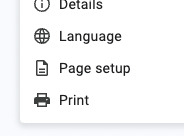
first, go to Page Set Up

this is what the default is
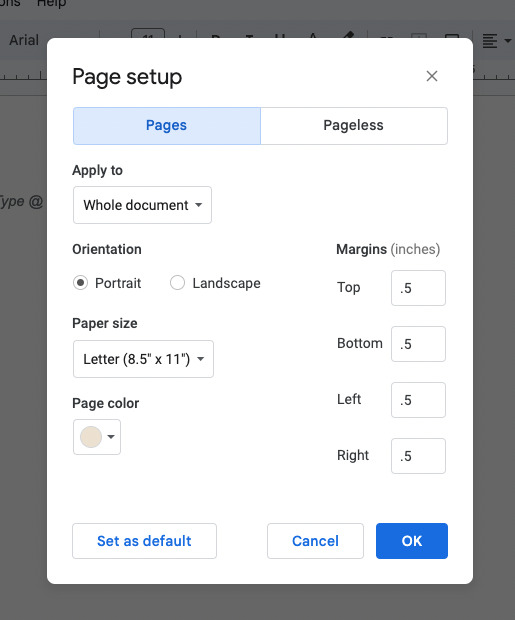
For my setup: Margins will change to .5" for top, bottom, left, and right.
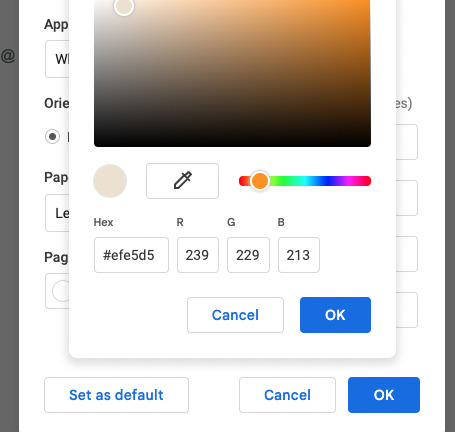
this is the page color I chose but it's totally optional.

Then, I change my default font. Here is how to find the ones I like. Go to the font option, then click More fonts.
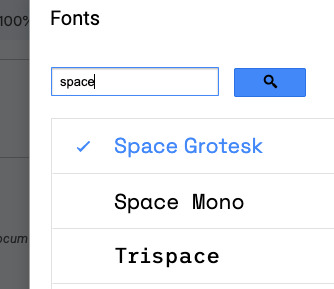
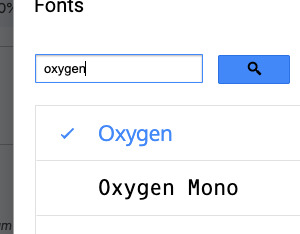
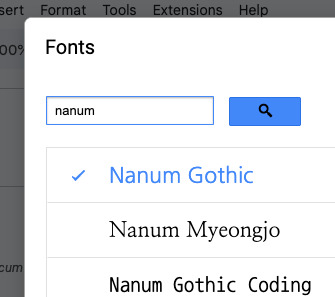
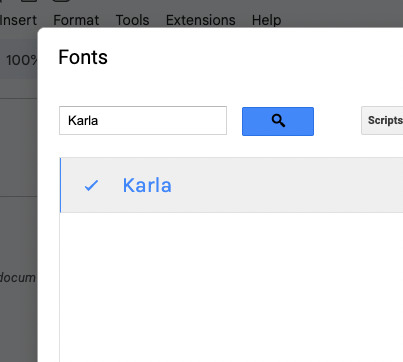
These are the fonts I love. You can search them or browse for ones you like.
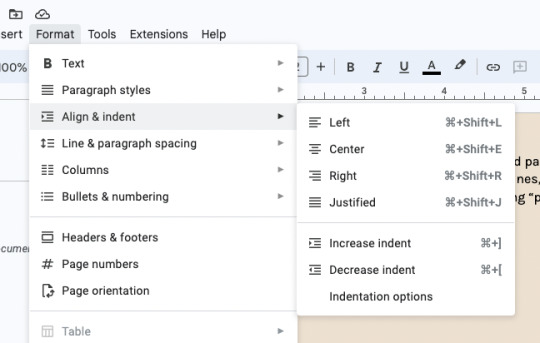
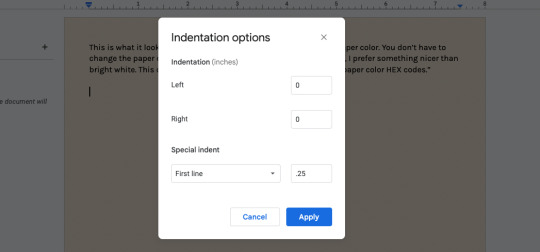
next, i change my first-line paragraph indent to .25"
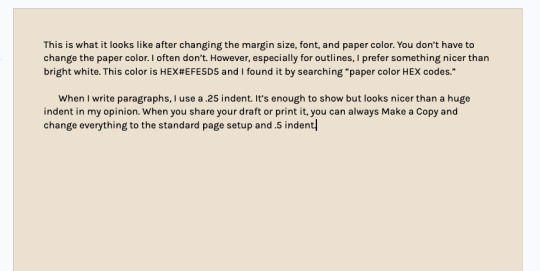

For Outlining
(and also character profiles, world-building, etc.)
You are going to follow the same steps as above first. The only difference is you don't need to mess with any of the indent settings.
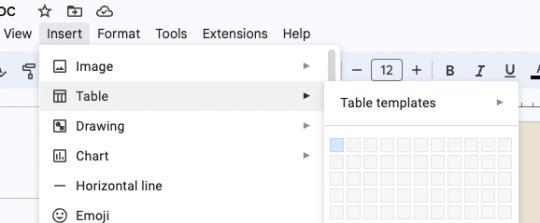
I use boxes as dividers and organizers. To do this, go to Insert > Table > 1x1.
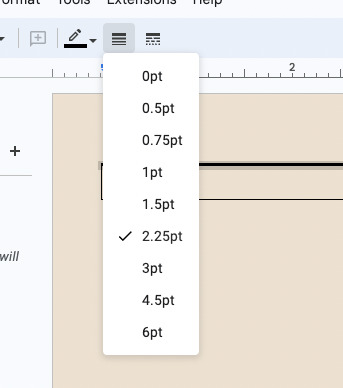
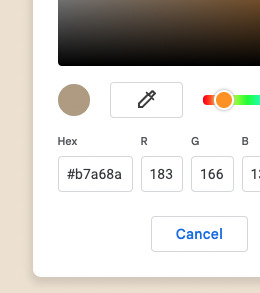
Then, change the border thickness to 2.25pt. I usually have a color palette for these, so I'm choosing a darker brown than the background for the borders. But white paper and black table lines work just as well and are more print-friendly ;)
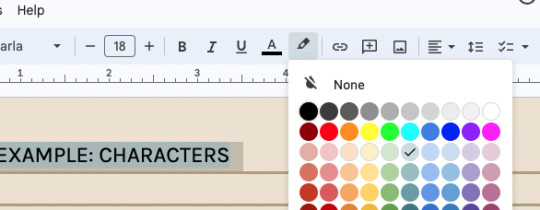
Next, I change the Headings, Subheadings, and Subtitles. To begin, I am changing my Title heading. I choose my font, how big I want it to be, and then I like using a highlight color as well. Here, I'm using a standard light/pastel color and 18pt font.
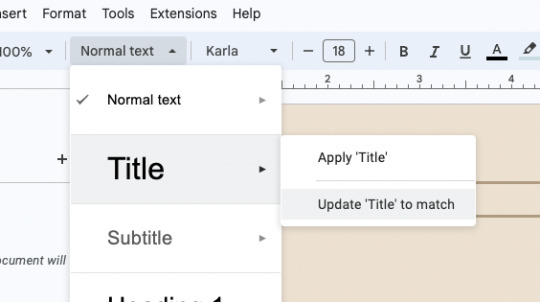
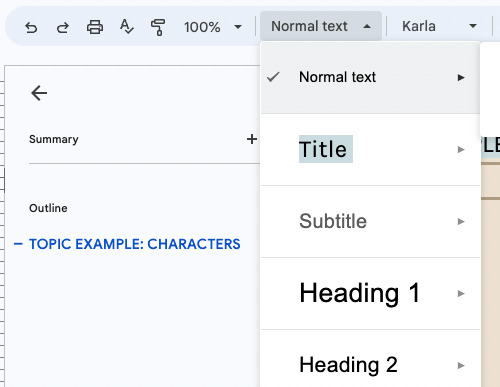
Highlight to select this new title. Go to the dropdown menu that says "normal text", hover over "Title", then choose "Update 'Title' to Match". Now you can click that every time with no hassle. And it will begin an outline for you to the left.

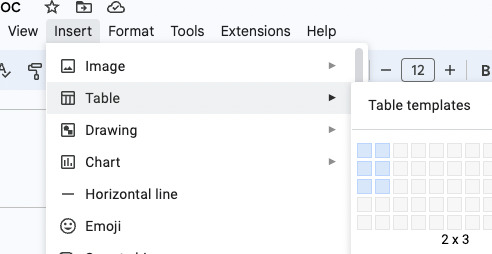
Let's make that box within a box! Make sure you are typing inside the first box. Then insert another table. I am going to use a 2x3.
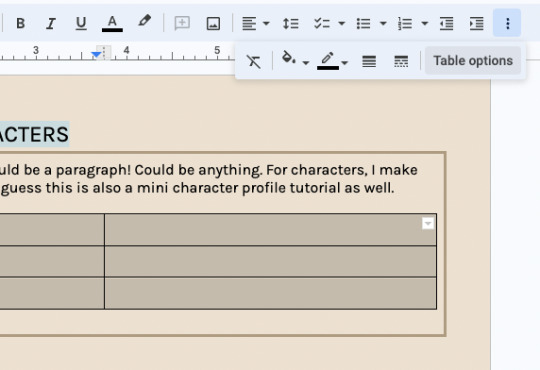

Because this table is more than one cell, you can go to the three dots up top and click "Table Options" to change every table border selected at once. Again, 2.25pt with the same color as before. The cell background color says white but you don't have to change it to match the page color.


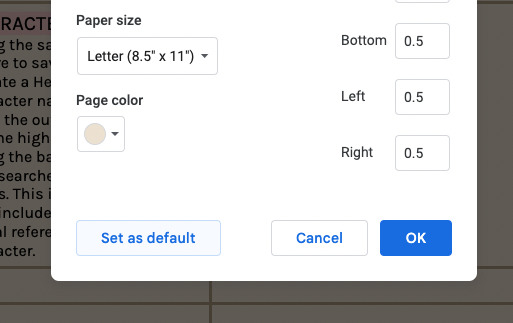
You can save both your Heading preferences and page setup as your default style. Every new document you make will use these settings automatically.

I really hope this was helpful and/or interesting!
As always, take what you want and leave the rest. Happy writing!
[call it good] writing
6K notes
·
View notes
Text


Show, don't tell : Part 1
Directory Writing Masterlist Blog Etiquette Buy me a Ko-Fi?

[ Angry + Frustrated ]
Red face
Tensing up jaw/body
Clenching fists
Gritting teeth
Stomped feet
Rolling eyes
Crossing arms
Kick/Hit something
Eyebrows furl
Face crunches up
Tight lips
Narrow eyes

[ Happy + Excited ]
Laugh/Giggle
Smile from ear to ear
High tone in voice
Smiling/Grinning while talking
Heart Pounding
Clapping
Breathing deeply
Squeal/Scream
Talking fast
Contentedly Sigh
Tilted head
Hand clasped over mouth

[Bored + Tired ]
Pace back and forth
Sigh loudly
Blank face
Play with fingers
Staring off into space
Yawning
Fidgeting around
Leaning head on hands
Rubbing eyes
Droopy eyes
Dark circles under eyes
Complaining

[Sad + Scared]
Trembling lips/body
Tears in eyes
Bite Nails
Curl up/tuck knees to chest
Bite nails
Eyes burn/turn red
Stop breathing OR breathe fast
Lose appetite
Frowning
Darting eyes
Blinking quick or not at all
Pounding heart

© ModifiedUchiha 2023 ★ Feel free to use them for inspiration , but give credit if adding to a list ★
10K notes
·
View notes
Text
The symbolism of flowers
Flowers have a long history of symbolism that you can incorporate into your writing to give subtext.
Symbolism varies between cultures and customs, and these particular examples come from Victorian Era Britain. You'll find examples of this symbolism in many well-known novels of the era!
Amaryllis: Pride
Black-eyed Susan: Justice
Bluebell: Humility
Calla Lily: Beauty
Pink Camellia: Longing
Carnations: Female love
Yellow Carnation: Rejection
Clematis: Mental beauty
Columbine: Foolishness
Cyclamen: Resignation
Daffodil: Unrivalled love
Daisy: Innocence, loyalty
Forget-me-not: True love
Gardenia: Secret love
Geranium: Folly, stupidity
Gladiolus: Integrity, strength
Hibiscus: Delicate beauty
Honeysuckle: Bonds of love
Blue Hyacinth: Constancy
Hydrangea: Frigid, heartless
Iris: Faith, trust, wisdom
White Jasmine: Amiability
Lavender: Distrust
Lilac: Joy of youth
White Lily: Purity
Orange Lily: Hatred
Tiger Lily: Wealth, pride
Lily-of-the-valley: Sweetness, humility
Lotus: Enlightenment, rebirth
Magnolia: Nobility
Marigold: Grief, jealousy
Morning Glory: Affection
Nasturtium: Patriotism, conquest
Pansy: Thoughtfulness
Peony: Bashfulness, shame
Poppy: Consolation
Red Rose: Love
Yellow Rose: Jealously, infidelity
Snapdragon: Deception, grace
Sunflower: Adoration
Sweet Willian: Gallantry
Red Tulip: Passion
Violet: Watchfulness, modesty
Yarrow: Everlasting love
Zinnia: Absent, affection
48K notes
·
View notes
Text
Writing tips for long fics that helped me that no one asked for.
1.) Don't actually delete content from your WIP unless it is minor editing - instead cut it and put it in a secondary document. If you're omitting paragraphs of content, dialog, a whole scene you might find a better place for it later and having it readily available can really save time. Sometimes your idea was fantastic, but it just wasn't in the right spot.
2.) Stuck with wording the action? Just write the dialog then revisit it later.
3.) Stuck on the whole scene? Skip it and write the next one.
4.) Write on literally any other color than a white background. It just works. (I use black)
5.) If you have a beta, while they are beta-ing have them read your fic out loud. Yes, I know a lot of betas/writers do not have the luxury of face-timing or have the opportunity to do this due to time constraints etc but reading your fic out loud can catch some very awkward phrasing that otherwise might be missed. If you don't have a beta, you read it out loud to yourself. Throw some passion into your dialog, you might find a better way to word it if it sounds stuffy or weird.
6.) The moment you have an idea, write it down. If you don't have paper or a pen, EMAIL it to yourself or put it in a draft etc etc. I have sent myself dozens of ideas while laying down before sleep that I 10/10 forgot the next morning but had emailed them to myself and got to implement them.
7.) Remember - hits/likes/kudos/comments are not reflective of the quality of your fic or your ability to write. Most people just don't comment - even if they say they do, they don't, even if they preach all day about commenting, they don't, even if they are a very popular blog that passionately reminds people to comment - they don't comment (I know this personally). Even if your fic brought tears to their eyes and it haunted them for weeks and they printed it out and sent it to their friends they just don't comment. You just have to accept it. That being said - comment on the fic you're reading now, just do it, if you're 'shy' and that's why you don't comment the more you comment the better you'll get at it. Just do it.
8.) Remove unrealistic daily word count goals from your routine. I've seen people stress 1500 - 2000 words a day and if they don't reach that they feel like a failure and they get discouraged. This is ridiculous. Write when you can, but remove absurd goals. My average is 500 words a day in combination with a 40 hour a week job and I have written over 200k words from 2022-2023.
9.) There are dozens of ways to do an outline from precise analytical deconstruction that goes scene by scene to the minimalist bullet point list - it doesn't matter which one you use just have some sort of direction. A partial outline is better than no outline.
10.) Write for yourself, not for others. Write the fic you know no one is going to read. Write the fic that sounds ridiculous. You will be so happy you put it out in the world and there will be people who will be glad it exists.
22K notes
·
View notes